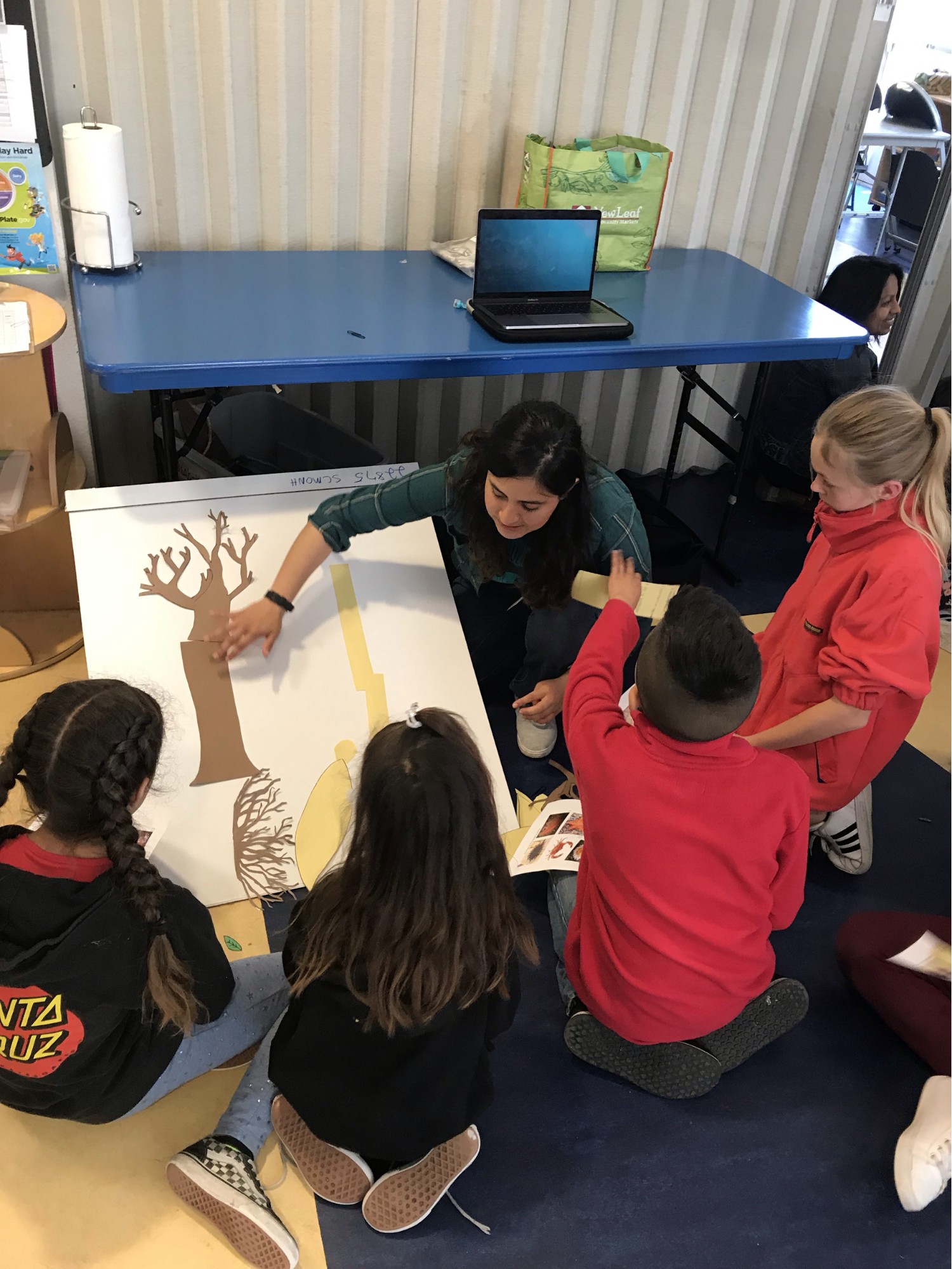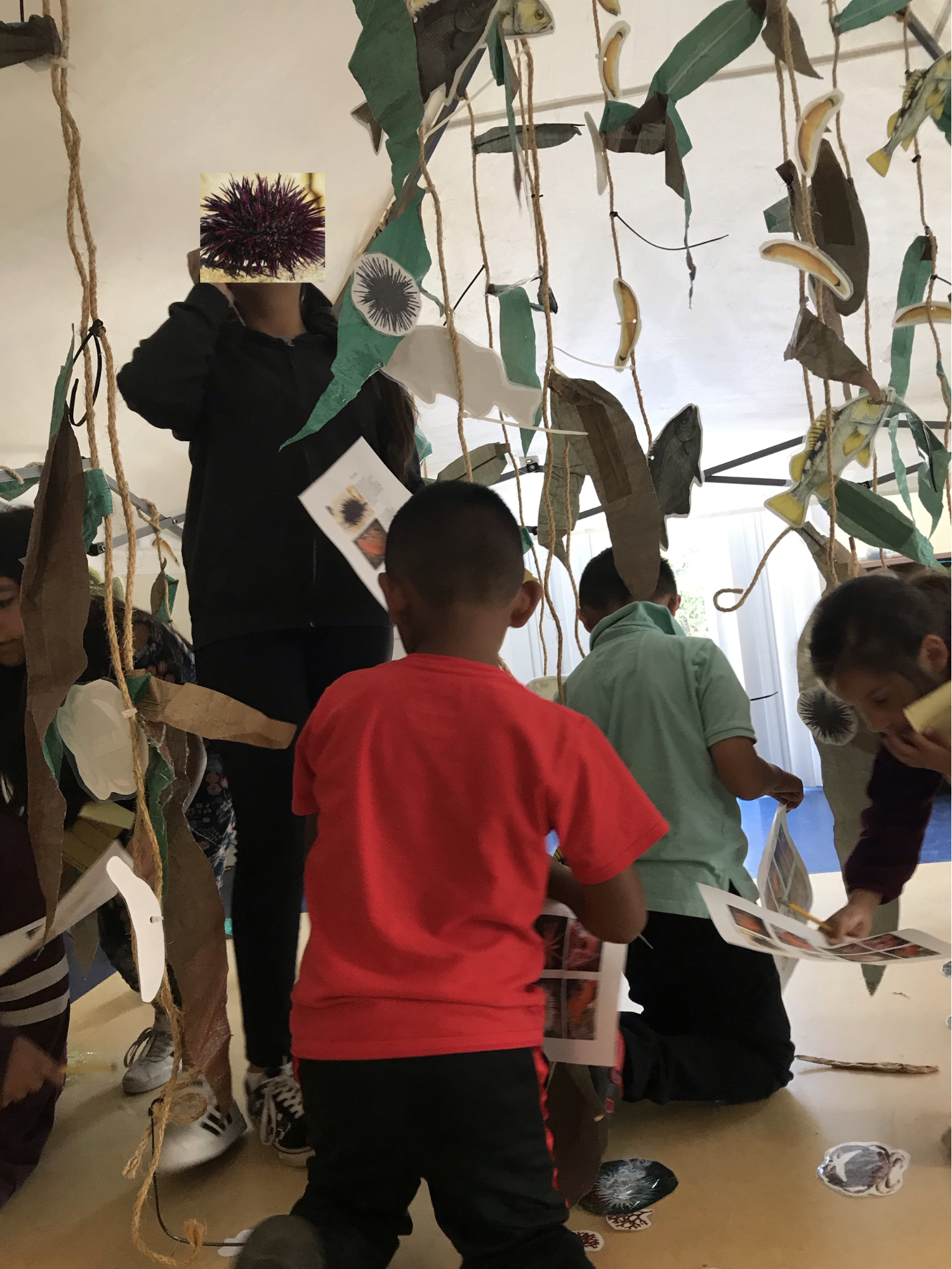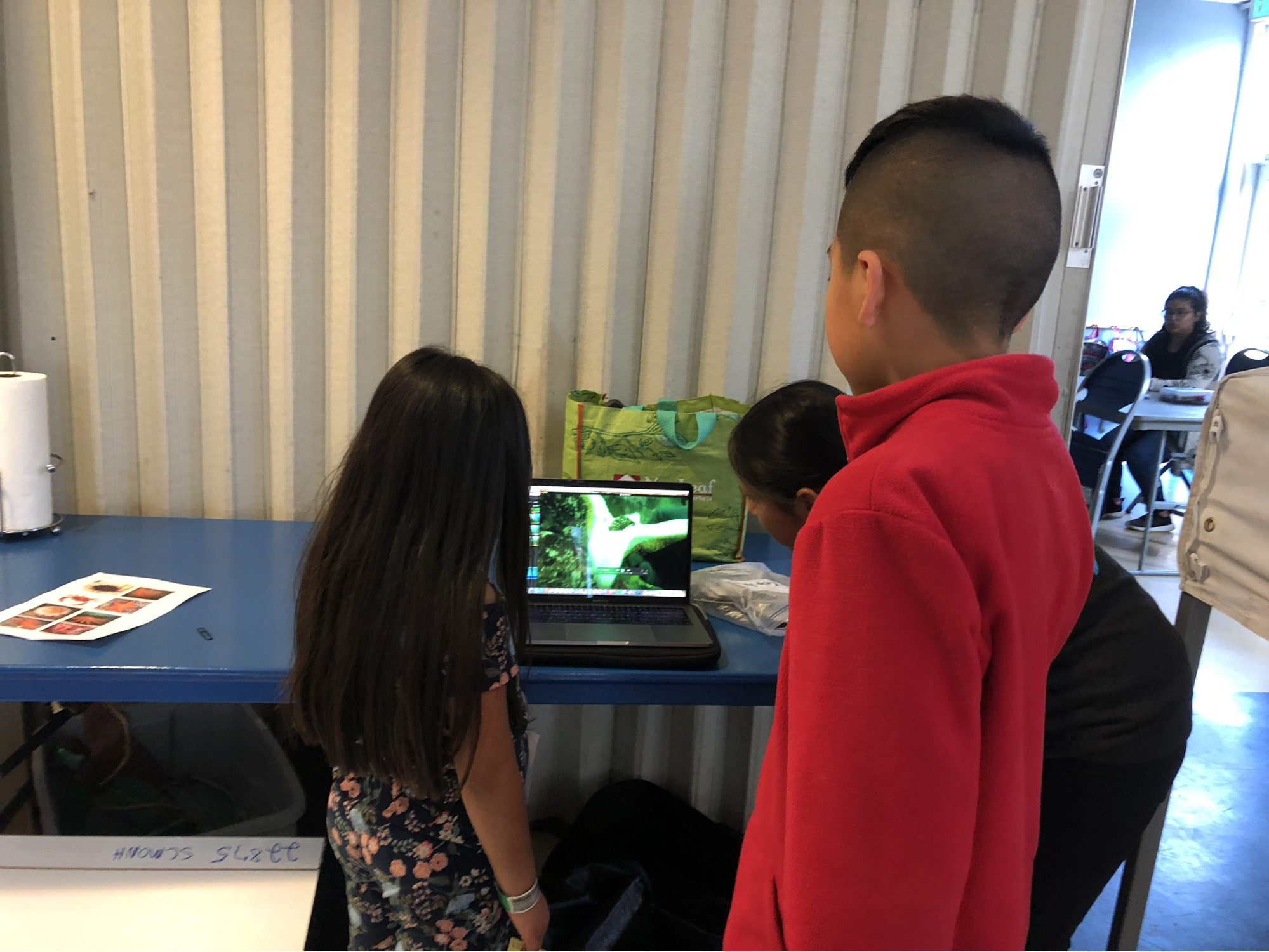
Maria guiding the students
to compare
the structure and function
of terrestrial trees and
underwater kelp.
As a senior Environmental Studies major and Webster Fellow, I am working with the Santa Cruz Natural History Museum to help connect more people to nature. My project, Forests, is a hybrid project between a mobile museum, a unique educational outreach program that brings museum-like exhibits to people, and an enrichment activity. Forests is designed for the elementary and middle school students of Nueva Vista Community Center and the general public. This project stems from a strong desire to make natural history and science available to Latino students.
Often low-income minority students don’t have access to spaces that facilitate learning in and from nature. Creative learning spaces provide an avenue for students to engage in deep thinking and to increase their interest and career aspirations in math and science. Research on the benefits of exposing kids to nature demonstrates that environmental education can aid in emotional, cultural and intellectual development. Furthermore, it engages students through observable phenomena, guiding them to draw on existing knowledge and expand that knowledge through observation-based inquiry. I am working to bring students closer to nature by providing a creative learning space at the Nueva Vista Community Center, and by enhancing partnerships between the community center and the Santa Cruz Museum of Natural History.
Once a month a museum education coordinator and I visit the center with a hands-on activity that encourages students to appreciate and connect with nature while using the scientific method to make educated hypothesis to answer their questions. I am also translating some of the materials and activities for the Museum’s Wetland Kit, one of the many educational programs available to local teachers, into Spanish. This provides me the opportunity to reflect on my personal language barriers, noticing the difference that being able to read something in my native language has had on my learning process in general. Given how fluid language is in different regions, translation can be a difficult discipline.

I designed my curriculum with the principle of backwards design: where educators start with overall goals and objectives and then design and expand the curriculum from there. While this has been particularly challenging for me, I am able to understand its benefits, as it helps educators stay on topic and evaluate how a particular activity is contributing to meeting the overall goals and objectives. For my pop-up museum, I have activities for all types of learners, from visual to hands on learners and those who like to read fun facts. I used a pop-up kelp forest that encourages kids to explore and learn about the organisms that live in a kelp forest. I also made a scavenger hunt with fun facts about the organisms. For the more hands on learners, I created a compare and contrast station that guides students to draw from their existing knowledge of terrestrial forests to then compare and contrast terrestrial and underwater forests. I also had a live organism area, where students get the opportunity to observe and think of the adaptations of algae, bat stars, mussels and an anemones in the kelp forest.
Changing perceptions of nature, especially for low-income and minority people, involves working towards a more holistic understanding of cultural, socio-economic, and language barriers. At the museum I have learned a lot about moving away from a traditional model of learning where the student is a bucket and the teacher is the only source of information. Instead, our model of environmental education highlights the importance encouraging students to see learning as a process where they can learn from one another. Students are guided to expand their own knowledge repertoire through observation and open-ended questions. In the process, I am fortunate to work with individuals whose appreciation for nature is a source of inspiration for myself. I continue to cultivate a more wholesome perspective of science, with observation at the base of the scientific method. My experiences highlight a central component of connecting people to nature: conversation and observation.

How we know what we know: students
watching transect videos of SCUBA divers
doing reef surveys, and animated
videos of underwater kelp forests.
I want to thank the education team at the Santa Cruz Natural History Museum for helping me design the curriculum and for all of your inspiration and support. I'm also thankful to Joshua Smith, Ecology and Evolutionary Biology PhD candidate at UCSC, for his mentorship, help obtaining this internship and for the inspiration for these activities. Thanks to the Raimondi-Carr lab for letting me borrow their pop up kelp forest. Finally, thanks to the Helen and Will Webster Foundation for making this possible by funding this project.
